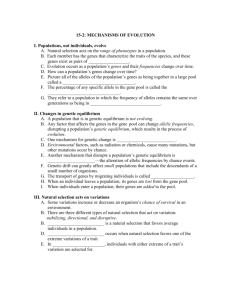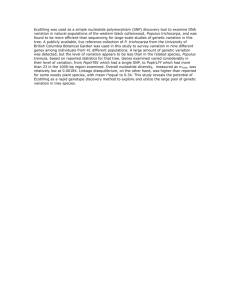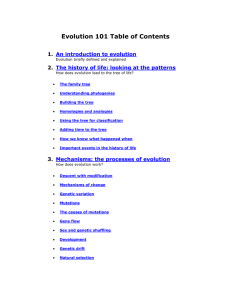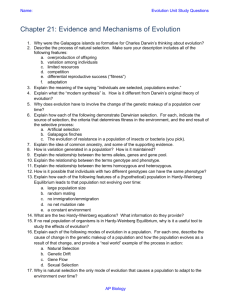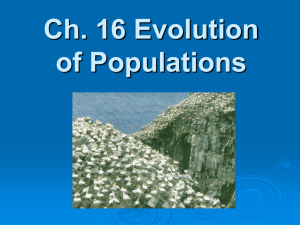CHAPTER 16 – POPULATION GENETICS AND SPECIATION
advertisement
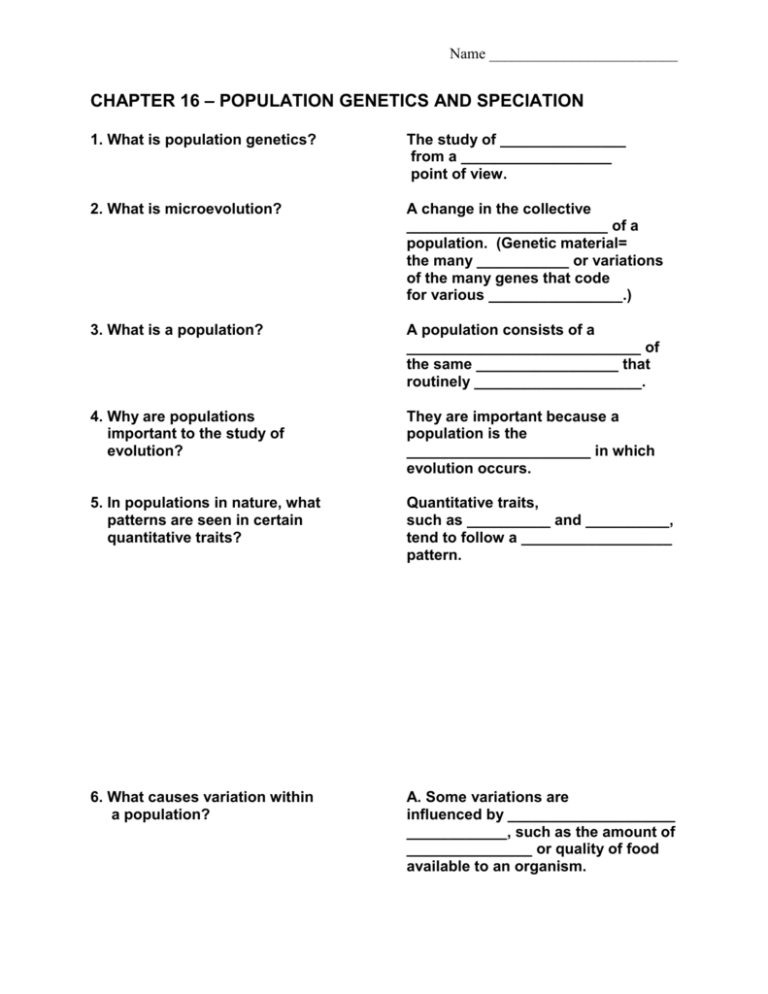
Name _________________________ CHAPTER 16 – POPULATION GENETICS AND SPECIATION 1. What is population genetics? The study of _______________ from a __________________ point of view. 2. What is microevolution? A change in the collective ________________________ of a population. (Genetic material= the many ___________ or variations of the many genes that code for various ________________.) 3. What is a population? A population consists of a ____________________________ of the same _________________ that routinely ____________________. 4. Why are populations important to the study of evolution? They are important because a population is the ______________________ in which evolution occurs. 5. In populations in nature, what patterns are seen in certain quantitative traits? Quantitative traits, such as __________ and __________, tend to follow a __________________ pattern. 6. What causes variation within a population? A. Some variations are influenced by ____________________ ____________, such as the amount of _______________ or quality of food available to an organism. Name _________________________ B. Variations are also influenced by ___________________. 7. What causes genes to vary? A. ______________- a random ________________ in genes that is passed on to offspring. B. ______________________- the ______________ of genes in a diploid individual (meiosis; independent assortment/crossing over). C. The random _______________ of gametes during sexual reproduction. 8. What is a gene pool? The total ______________________ in a population. (The genes for the next generation exist in an imaginary pool.) 9. What forces disrupt genetic equilibrium or cause change of the population’s allele frequencies? 1. ____________________ 2. ________________- the movement of individuals ________ a population. _______________- the movement of individuals __________ of a population. 3. __________________ populations 4. _____________________ mating 5. Natural ___________________ 10. What is genetic drift? Genetic drift is the phenomenon by which ___________ __________________ in a population change as a result of random events, or chance. e.g. Northern elephant seals have lost genetic variability because they have been hunted to near extinction. With such a small population left and Name _________________________ _________ gene pool_________ variation. 11. What is a genetic bottleneck? A genetic bottleneck occurs when environmental _____________ cause populations to become so ____________ that inbreeding occurs which often leads to decreased ______________ variability. Over evolutionary time, populations with low variability are less likely to ______________ to changing environmental conditions. e.g. Cheetahs Black footed ferrets. 12. What is sexual selection? When one of the genders (male or female) _____________ a ____________ based on the __________________or certain traits. e.g. Female peahens choose attractive peacocks 13. What is sexual dimorphism? When the __________________ of the female is different from the appearance of the ____________. e.g. Male lions have a ____________, female lions don’t. 14. What is speciation? The process of ____________ formation, which results in closely _______________ species. 15. What causes speciation? ________________________- the physical ______________ of members of a population. Also called ___________________ speciation. e.g. Death Valley pupfish Grand Canyon squirrels Name _________________________ ________________ Isolation- results from ______________ to successful breeding between population groups in the same area. Also called __________________ speciation. e.g. Frogs

